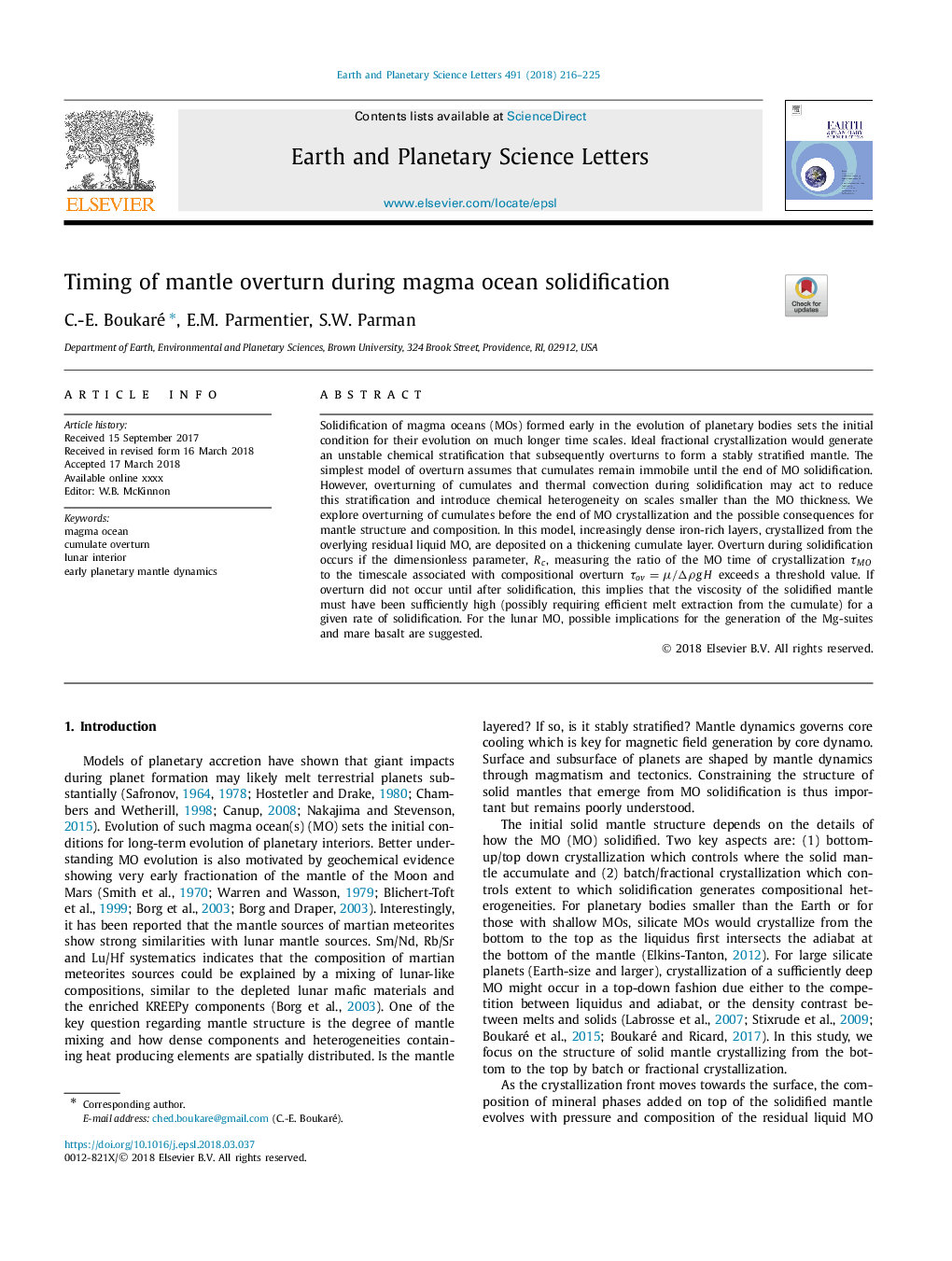| Article ID | Journal | Published Year | Pages | File Type |
|---|---|---|---|---|
| 8906953 | Earth and Planetary Science Letters | 2018 | 10 Pages |
Abstract
Solidification of magma oceans (MOs) formed early in the evolution of planetary bodies sets the initial condition for their evolution on much longer time scales. Ideal fractional crystallization would generate an unstable chemical stratification that subsequently overturns to form a stably stratified mantle. The simplest model of overturn assumes that cumulates remain immobile until the end of MO solidification. However, overturning of cumulates and thermal convection during solidification may act to reduce this stratification and introduce chemical heterogeneity on scales smaller than the MO thickness. We explore overturning of cumulates before the end of MO crystallization and the possible consequences for mantle structure and composition. In this model, increasingly dense iron-rich layers, crystallized from the overlying residual liquid MO, are deposited on a thickening cumulate layer. Overturn during solidification occurs if the dimensionless parameter, Rc, measuring the ratio of the MO time of crystallization ÏMO to the timescale associated with compositional overturn Ïov=μ/ÎÏgH exceeds a threshold value. If overturn did not occur until after solidification, this implies that the viscosity of the solidified mantle must have been sufficiently high (possibly requiring efficient melt extraction from the cumulate) for a given rate of solidification. For the lunar MO, possible implications for the generation of the Mg-suites and mare basalt are suggested.
Keywords
Related Topics
Physical Sciences and Engineering
Earth and Planetary Sciences
Earth and Planetary Sciences (General)
Authors
C.-E. Boukaré, E.M. Parmentier, S.W. Parman,
